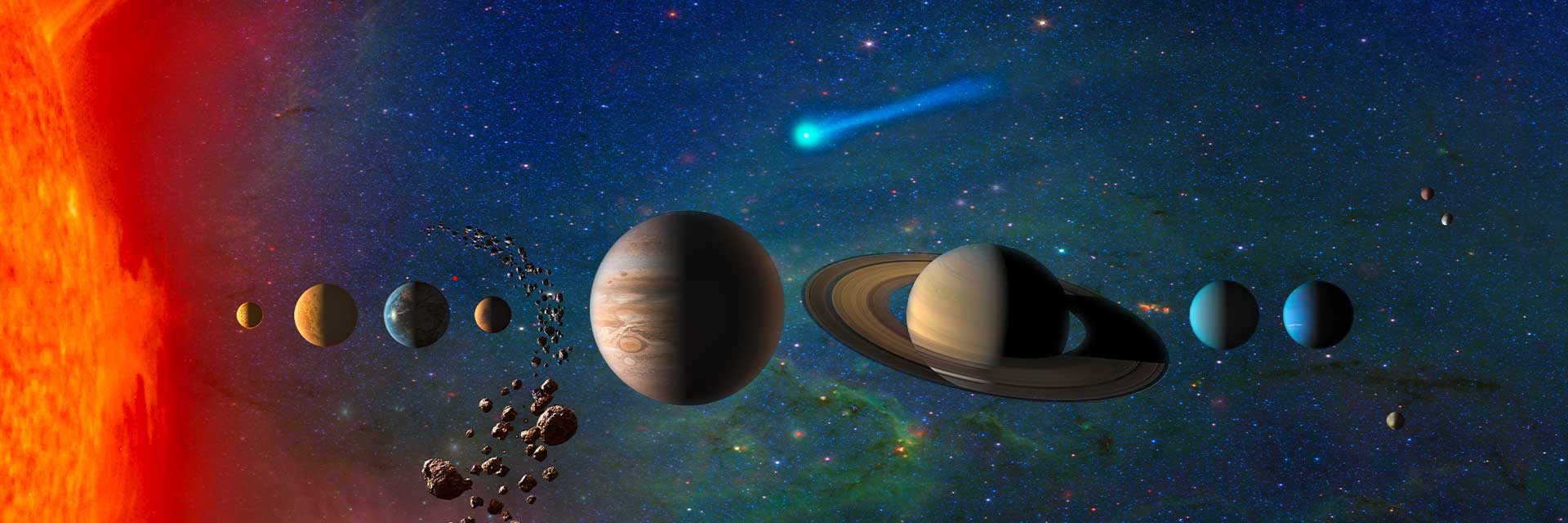Our solar system consists of a star, planets, moons, dwarf planets, asteroids and comets. We call our star the Sun and it consists of over 99% of all the mass in our Solar System. The Sun heats and lights our world and allows life on Earth. It is a luminous object; planets and moons are nonluminous objects but we can see them because of the light they reflect. The Sun is just a simple star inside the Milky Way, our galaxy. Galaxies are made up of hundred thousands of stars.
Planets are celestial bodies that orbit the stars with three conditions:
* They must orbit a star.
* They must be big enough to have enough gravity to force it into a spherical shape.
* They must be big enough that its gravity has cleared away any other objects of a similar size near its orbit around the Sun.
Our solar system has eight planets divided in two groups. The inner planets are small, rocky, they don’t have rings and they have few satellites; they are Mercury, Venus, Earth and Mars. On the contrary, the outer planets are large, made of gases, have rings and lot of moons; they are Jupiter, Saturn, Uranus and Neptune. All the planets have elliptical orbits around the Sun that are in the same plane: the ecliptic. Dwarf planets are smaller spheres that orbit the Sun, but they haven’t cleared away their orbit of other objects.
Satellites are celestial bodies that orbit planets, like our Moon. Mercury and Venus are the only planets that do not have satellites.
Asteroids are smaller rocky bodies orbiting the Sun. They vary in size from several meters to about 1000 km. Many asteroids are between Mars and Jupiter and form the asteroid belt. Comets are made of ice, dust and rocks and they orbit the Sun too, but they have a very elliptical orbit; they show a long tail when they are near the Sun.
Questions
a) Which planet is the first?
b) Which planet occupies the second position?
c) Is Mercury near the Sun?
d) Is Jupiter far from the Sun?
e) Is Mars near the Earth?
j) There are four big planets in the Solar System. Which are those ones?
k) Which planets are small?
l) Which planet is red?
m) Which planets are bluish coloured?
n) Which planets have rings around them?

No hay comentarios:
Publicar un comentario